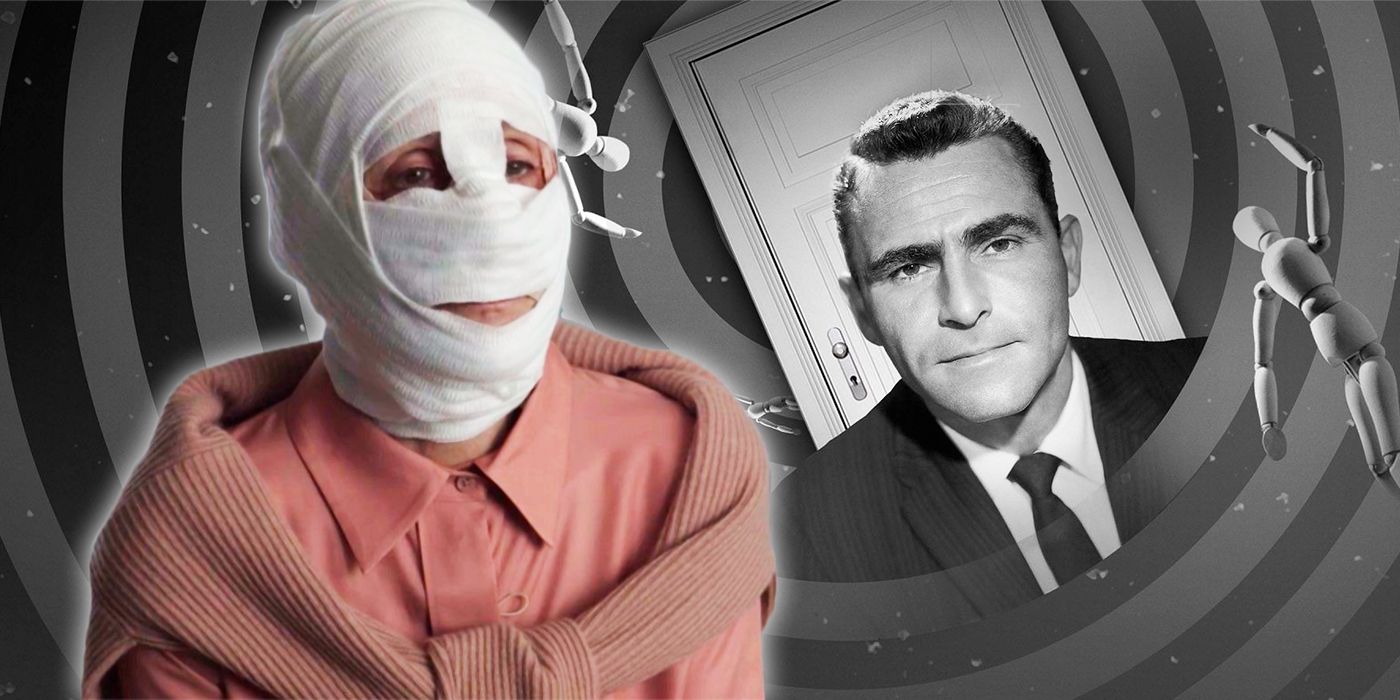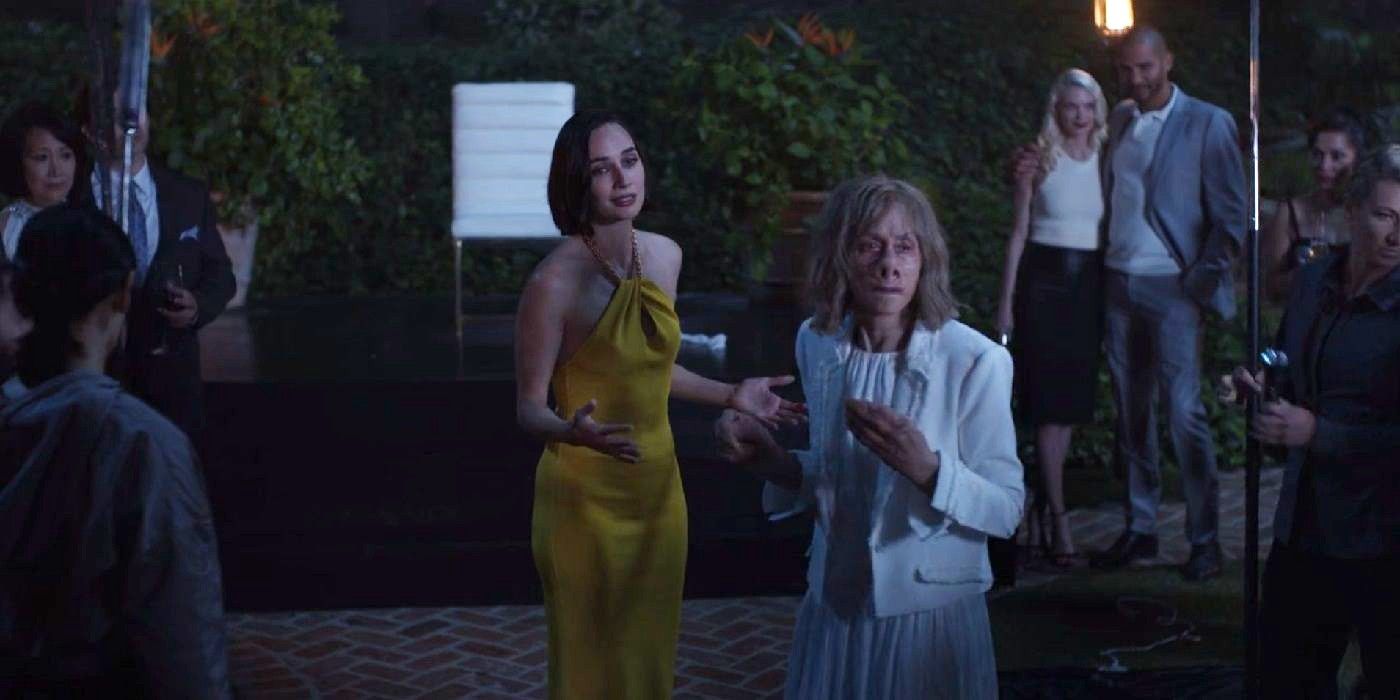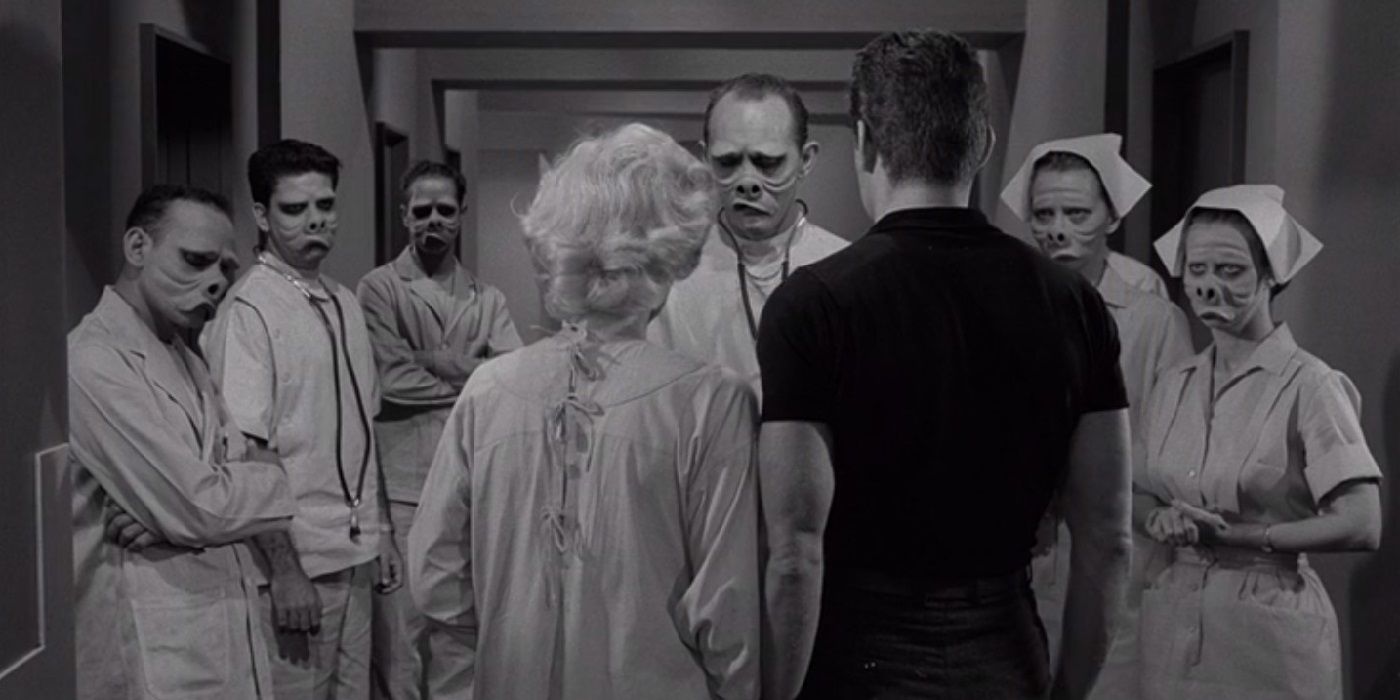The following contains spoilers for American Horror Stories Season 2, Episode 6, "Facelift," which aired Aug. 25, on Hulu.
The new season of American Horror Stories has found firmer footing than the first in the way it pays homage to earlier horror classics. Every episode proudly wears its influences on its sleeve, and while they largely find their own path to take and their own stories to tell, they make very clear connections to the stories that inspired them. Indeed, part of the fun is seeing where they diverge from the source material. When at their best, the episodes are able to turn expectations completely upside down.
Season 2, Episode 6, "Facelift" takes inspiration from a number of sources, including folk horror movies like Midsommar and The Wicker Man, for its gruesome finale. But its primary focus is plastic surgery, which has formed a subgenre of horror all its own. More specifically, it hones in on a classic episode of The Twilight Zone and finds a terrific way to flip the script.
"Facelift" concerns itself with Virginia: a wealthy Beverly Hills widow desperate to turn back the clock on her aging features. She visits a mysterious plastic surgeon who promises to "reveal her true self," which entails a complicated procedure to both her face and her hands. The surgeon invites her to a private retreat with her other clients for the removal of her bandages. The twist is that they're a cult. She's been groomed as a sacrifice to their god -- to be hunted and murdered as part of a renewal ritual -- and instead of making her beautiful, the surgery has given her the features of a pig. The cult chases her down in the woods shortly thereafter and completes their sacrifice.
The episode's coda is a bit rough -- Victoria's stepdaughter plays a central role that "Facelift" can't quite figure out -- but the focus on surgery is spot-on, as is its horrifying results. Horror movies on the subject are uncommon, but often quite potent: notably 1960's Eyes Without a Face and 2011's The Skin I Live In. But its biggest inspiration is doubtless the original Twilight Zone Season 2, Episode 6, "Eye of the Beholder." It depicts a woman described as hideously deformed about to undergo the last of a series of unsuccessful plastic surgeries to repair her face. Everyone's faces are hidden in the episode, including the medical personnel treating her, until her bandages are removed: revealing her to be a beautiful woman and everyone else sporting overtly monstrous features.
The episode's ironic lesson is in the title. The society in which she lives -- whose origins are deliberately vague -- is openly fascistic, but the doctors and nurses are depicted as kind and sympathetic in direct opposition to their features. A handsome man arrives -- afflicted with her "condition" -- and takes her to a village of "their own kind" far away. Standards of beauty are enforced by the state, but the episode's characters are universally compassionate and kind-hearted, and even the despondent heroine begins to accept the axiom that true beauty lies within.
"Facelift" elegantly reverses both the twist and the underlying message. Victoria's face actively resembles those of the "normal" people in "Eye of the Beholder" -- complete with an overtly piggish nose -- while her murderers are the assembled beautiful people of Beverly Hills. And unlike "Eye of the Beholder," all of them are monsters underneath. The cult kills people in this manner once a year in exchange for wealth and eternal beauty, while Virginia herself is depicted as vain, shallow and thoughtlessly cruel to those around her. Her new face aptly reflects her soul. The irony is her killers are just as awful; they've simply deluded themselves into believing otherwise. Their wilderness retreat is a similar reversal of the village where "Eye of the Beholder's" heroine is taken, with its implied understanding and belonging replaced by savagery and murder.
Feminism has played a large role on American Horror Story from the beginning, and American Horror Stories has zeroed in on that this season in its search for inspiration. "Facelift" finds a potent target in patriarchal norms of beauty and aging, which its villains literally worship and its protagonist ultimately succumbs to. If beauty is a matter of the soul, then so is ugliness -- giving "Facelift" a wicked twist on The Twilight Zone's more benevolent message.
New episodes of American Horror Stories stream every Thursday on Hulu.



